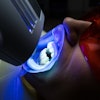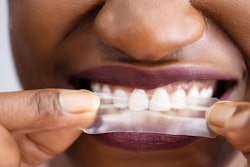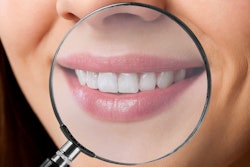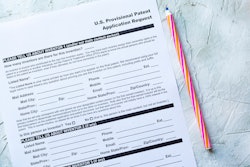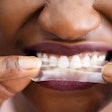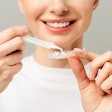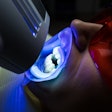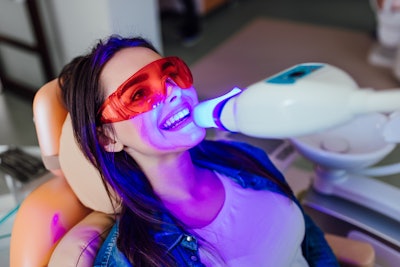
Dental bleaching with 35% hydrogen peroxide may pose a higher risk of tooth sensitivity (TS) in the lower arch compared to the upper arch, according to a study recently published in the Journal of Dentistry.
Although there were no significant differences in gingival irritation or bleaching effectiveness, clinicians should be aware of these sensitivity differences, the authors wrote.
"In-office dental bleaching induces higher risk and the intensity of TS in the mandibular arch when compared to maxillary arch, without significant differences in gingival irritation, or bleaching efficacy,” wrote the authors, led by Karine Letícia da Silva of the State University of Ponta Grossa in Brazil (J Dent, October 9, 2024, 105383).
In this multicenter randomized controlled trial, 90 adult participants were randomly assigned to one of two groups based on which arch would first receive a 35% hydrogen peroxide gel. The treatment consisted of two sessions that were spaced one week apart. TS and gingival irritation (GI) were recorded immediately after treatment, and at one hour, 24 hours, and 48 hours posttreatment using a 0-10 visual analog scale (VAS).
Bleaching efficacy (BE) was evaluated before treatment and 30 days after using shade guide units (ΔSGU), CIELab (ΔEab), CIEDE2000 (ΔE00), and the whiteness index for dentistry (WID). TS and GI were analyzed using McNemar's and paired t-tests, while BE was compared using the Wilcoxon Signed Rank Test (for ΔSGU) and paired t-test, they wrote.
Approximately 75% of patients experienced some degree of TS during dental bleaching. The odds ratio for TS was 4.4 (95% CI, 1.6 to 14.8), indicating that in-office bleaching caused significantly more TS in the mandibular arch compared to the maxillary arch. The TS intensity was 1.4 ± 1.7 VAS units in the maxillary arch and 2.1 ± 1.2 in the mandibular arch, confirming higher sensitivity in the mandibular arch (p = 0.003; paired t-test), according to the results.
For GI, there was no significant difference between arches (p = 0.42; McNemar's test). Forty patients reported GI in both arches, with nine reporting pain only in the maxillary arch. Of the 40 patients with GI in the mandibular arch, only five experienced it exclusively there. The average GI intensity across arches was 0.5 ± 1.2 VAS units, with no significant differences (p = 0.77).
All color evaluation methods showed significant bleaching effectiveness for both arches. The subjective color assessment found a mean change of about seven units on the Vita Classical scale and eight units on the Vita Bleachedguide scale, 30 days posttreatment, with no significant differences between the arches (p = 0.86 and p = 0.55, respectively). Objective color measurements also showed no significant differences between the arches after 30 days (p > 0.05), according to the results.
However, the study had limitations. The research team used only one bleaching gel and application regimen, which may limit the findings' relevance to other agents with different concentrations or application times, the authors wrote.
"When performing in-office dental bleaching, clinicians should consider that the mandibular arch is more likely to experience greater sensitivity compared to the maxillary arch," they concluded.



